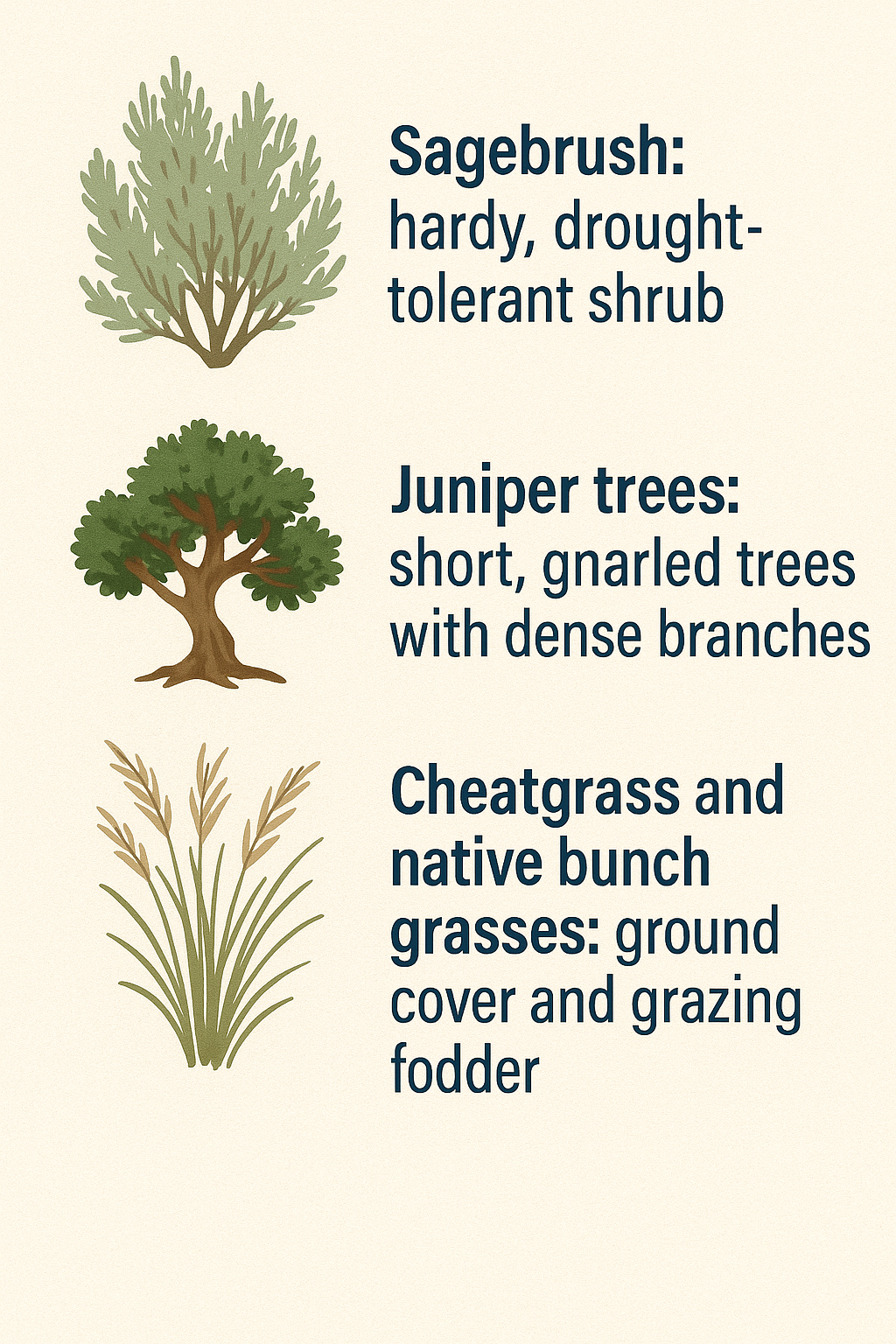What to Know About Utah’s Sagebrush and Juniper Zones
The Landscape of Eastern and Central Utah
Much of the land for sale in Duchesne, Fruitland, and surrounding areas features sagebrush flats and juniper-covered hills. These are natural high-desert ecosystems that offer privacy, beauty, and recreational opportunity—but they also come with their own considerations.
What Grows in These Zones?
Typical vegetation includes:
Sagebrush: hardy, drought-tolerant shrub
Juniper trees: short, gnarled trees with dense branches
Cheatgrass and native bunch grasses: ground cover and grazing fodder
These plants are well adapted to dry, rocky soil and make the land ideal for low-maintenance recreation or seasonal use.
How It Affects Land Use
Grazing: These zones are often good for light livestock grazing—goats, horses, or cattle—as long as there’s supplemental water.
Fencing: You’ll need to clear around the fence line and use sturdy materials (juniper roots can shift posts).
Gardening: Soil here is alkaline and rocky. Raised beds or soil amendments help with growing produce.
Is Juniper Land Good for Building?
Yes, but it requires some prep. You’ll want to:
Clear small pads for structures
Mulch or chip juniper trimmings
Consider defensible space for fire safety
Junipers can provide shade and privacy, but they’re also flammable—so spacing is key.
Fire Safety in Sagebrush & Juniper Terrain
Both sagebrush and juniper are fuel for wildfires. If you plan to build or camp regularly:
Clear a 30–100 ft radius around use areas
Keep firewood piles away from trees
Avoid parking on dry grass in summer
Can You Live Full-Time on This Type of Land?
Yes, many off-grid cabins and trailers thrive in these zones. Solar works well with the open skies, and junipers can offer some wind protection in winter. Just be prepared for:
Limited water access (may need hauled water or wells)
Remote roads (4WD in winter recommended)
Managing natural growth and fire prevention
Summary: Know the Land, Make the Most of It
Utah’s sagebrush and juniper zones are beautiful and quiet—but they’re not manicured suburbs. With the right planning, they offer a low-cost, low-maintenance way to enjoy land your way.


